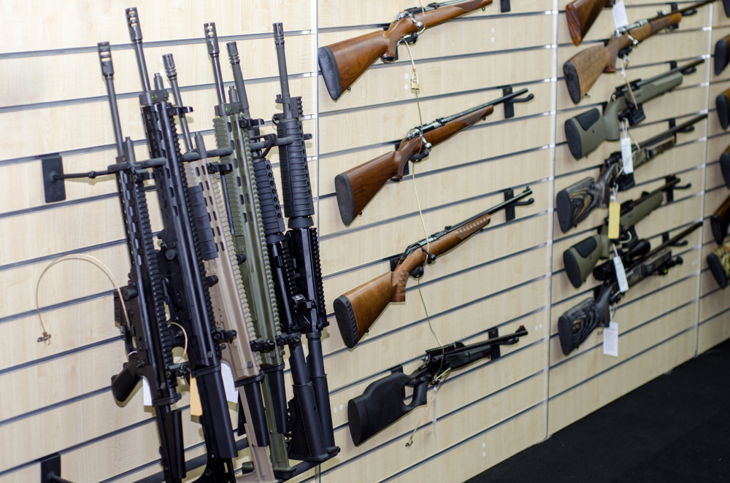When it comes to selecting a gun, one of the age-old debate between the Remington .22-250 vs 223 continues. After all, these are some of the most popular calibers people compare up to now. For regular hunters, you probably know what I’m saying. But is there a true and accurate answer?
Well, let me just tell you now: we’ll always have different opinions and there is not one specific caliber that would be number one for all hunters. However, if you’re trying to figure out which is best for you, you need to do your research! That’s why I put out this comparison for you to make your decision.
Remington .22-250 vs 223: What’s the Difference?
Before anything else, I want to say that I am neutral with my decision and that there is no bias. I cover the basics and key features to each product to help YOU make the decision.
But before we get into the article, here is a more usual presentation on both calibers to see which is recommended for how you hunt:
Discover more: 6.5 Creedmoor vs 7mm-08 Remington: Which is The Best for Hunting?
The .22-250 Remington

The Remington .22-250 is older than the 223, which uses a .473-inch case head diameter. This caliber offers a good velocity with a slight difference compared to the .222 Remington, hitting game very hard and creating an impact. It’s also widely available and not as pricey compared to newer models.
With a 55-grain bullet and a muzzle velocity of up to 3,800 fps, it’s able to provide both speed and accuracy. Using lighter bullets, it can achieve velocities of more than 4,000 fps, while maintaining great energy when hunting your game.

Its predecessor, the .220 Swift, was the king in velocity. However, the .22-250 has the ability to be loaded just as good, with more flexibility when reloading. This is the best choice for shooters who want a combination of velocity, accuracy, and performance in extreme ranges.
When you pair this with a quality scope and have prepared hand loads, you’ll be able to take on a medium game just fine. And with the ability to use heavier 55-grain bullets, it offers a better advantage as it provides predictable accuracy and reliability.
And yes, it’s also great for hunting deer, though you need to be prepared with the reduction of accuracy compared to hunting foxes. It will take a steady hand to hunt deer with this, so this is best for more experienced hunters.
Its downfalls? You’ll require more powder, which will cause more recoil, noise and muzzle flash, as well as barrel throat erosion in the long run. Also, there’s the fact that targets disappear upon recoil, which is why a muzzle break comes in handy.
Specifications
|
Parent case |
.250-3000 Savage |
|
Case type |
Rimless, bottleneck |
|
Bullet diameter |
.224 in (5.7 mm) |
|
Neck diameter |
.254 in (6.5 mm) |
|
Shoulder diameter |
.414 in (10.5 mm) |
|
Base diameter |
.469 in (11.9 mm) |
|
Rim diameter |
.473 in (12.0 mm) |
|
Case length |
1.912 in (48.6 mm) |
|
Overall length |
2.35 in (60 mm) |
|
Rifling twist |
1-12, 1-14 |
|
Primer type |
Large rifle |
Ballistic Performance
|
Bullet mass/type |
Velocity |
Energy |
|---|---|---|
|
40 gr. (2.6g) BT |
4,224 ft/s (1,287 m/s) |
1,585 ft⋅lbf (2,149 J) |
|
50 gr. (3.2g) SP |
3,945 ft/s (1,202 m/s) |
1,728 ft⋅lbf (2,343 J) |
|
55 gr. (3.6g) SP |
3,786 ft/s (1,154 m/s) |
1,751 ft⋅lbf (2,374 J) |
|
60 gr. (3.9g) BT |
3,580 ft/s (1,090 m/s) |
1,708 ft⋅lbf (2,316 J) |
|
64 gr. (4.1g) Power Point |
3,500 ft/s (1,100 m/s) |
1,741 ft⋅lbf (2,360 J) |
The 223 Remington

The Remington .223 started off as a military round, which gives it the advantage. Designed as a mid-range assault cartridge for troops with low recoil, it offers the noise reduction one needs when hunting. Also, it has a longer length but shorter neck, compared to a .222 Remington.
It has the velocity of up to 3,300 fps when using a 55-grain bullet, used for AR-15 and bolt-action hunting rifles with great accuracy. Comparing it with the .22-250, the .223 offers good trajectory but with less recoil and a smaller package.
It’s a popular round which fits almost all available rifles, also usable with a variety of ammunition so there’s no problem in selecting what weapon goes with this caliber. However, the .223 itself is difficult to find, next to the .22 LR Rimfire.

As for its performance, it isn’t as hot as the .22-250, which results in less barrel wear and a longer lifespan. And with minimal recoil, it provides more distance and time to confirm a hit without needing the second chance. It’s best when hunting for fox or small deer species.
However, if you’re looking into the hardness and accuracy, then this is where the .223 falls short in comparison to the .22-250. However, if you’re focused more on minimal recoil and better wind deflection with heavy bullets, then you’ll want to consider the .223 Remington.
But again, the choice is up to you and depending on what rifle you use, so consider how you hunt, the climate, as well as the ammunition.
Discover more: What Is the Main Difference Between Centerfire and Rimfire Ammunition? How to Choose the Best Gun
Specifications
|
Parent case |
.222 Remington |
|
Case type |
Rimless, bottleneck |
|
Bullet diameter |
0.224 in (5.7 mm) |
|
Neck diameter |
0.253 in (6.4 mm) |
|
Shoulder diameter |
0.354 in (9.0 mm) |
|
Base diameter |
0.376 in (9.6 mm) |
|
Rim diameter |
0.378 in (9.6 mm) |
|
Rim thickness |
0.045 in (1.1 mm) |
|
Case length |
1.76 in (45 mm) |
|
Overall length |
2.26 in (57 mm) |
|
Rifling twist |
1 in 12 inch (military style rifles use 1:7 to 1:10 to stabilize longer bullets) |
|
Primer type |
Small rifle |
|
Maximum pressure (SAAMI) |
55,000 psi (380 MPa) |
|
Maximum pressure (CIP) |
62,366 psi (430.00 MPa) |
|
Maximum CUP |
52000 CUP |
Ballistic Performance
|
Bullet mass/type |
Velocity |
Energy |
|---|---|---|
|
36 gr (2 g) JHP |
3,750 ft/s (1,140 m/s) |
1,124 ft⋅lbf (1,524 J) |
|
55 (3.5 g) Nosler ballistic tip |
3,240 ft/s (990 m/s) |
1,282 ft⋅lbf (1,738 J) |
|
60 (3.9 g) Nosler partition |
3,160 ft/s (960 m/s) |
1,330 ft⋅lbf (1,800 J) |
|
69 (4.48 g) BTHP |
2,950 ft/s (900 m/s) |
1,333 ft⋅lbf (1,807 J) |
|
77 (5 g) BTHP |
2,750 ft/s (840 m/s) |
1,293 ft⋅lbf (1,753 J) |
If you want to succeed in deer hunting, a trail camera is just as important as a gun. Camojojo Trace offers an affordable option with live feed that I’ve personally tried and recommend.

Wrapping It Up
After all the research done, I have no favorites. I only covered the advantages and disadvantages fairly so there will be no bias in your decision, only the important factors that help you select which one is best for the way YOU hunt.
Hopefully, this article comparison of the .22-250 vs 223 gave you an idea on what you should invest in today. So don’t wait any longer and look into any of these products for your future hunts!
If you have any questions or want to share your tips and experiences with the Remington calibers, then comment below. Your thoughts will be much appreciated.


223 more these days seen in bolt guns in ar15 with add 556 options make cheap to shot if u by the 556 gun not just a 223 gun. 22-250 thoe is great gun can take coyotes cleanly